It’s the iconic Monsal Head hill climb this Sunday. Let’s take look at the course and it’s conditions with a few myWindsock Graphs. Could this be the year Malcolm Elliotts 1981 Men’s course record (1min 14.2secs) is bettered?
Forecast as of 19:00 30th September 2021. View the latest Monsal Head 2021 Weather Forecast.
The Forecast
Let’s start with the basics. The overall forecast is, cool temperatures and a strong WSW wind, gusting from 18mph to 32mph.


The Course
The following myWindsock dynamics are computed for a record equaling 1min 14sec ride. 80KG total mass, 880Watts, 11Watts/kg.
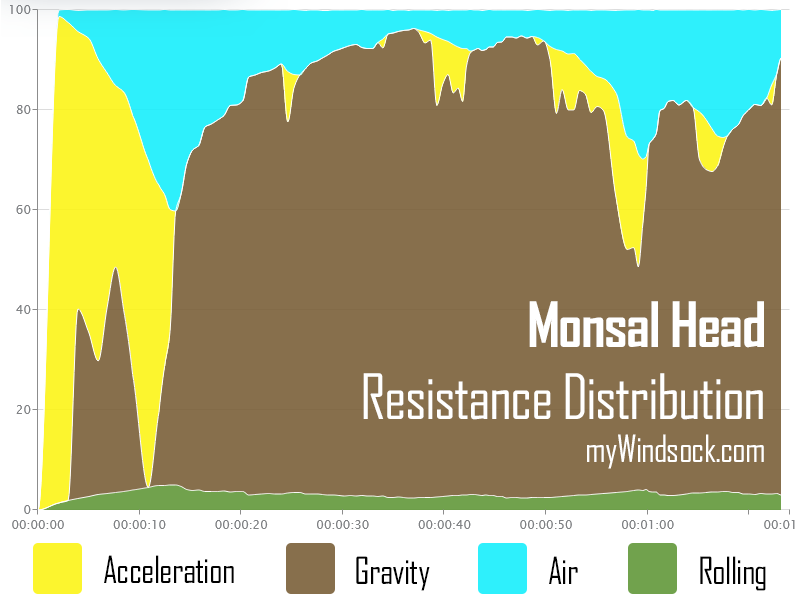
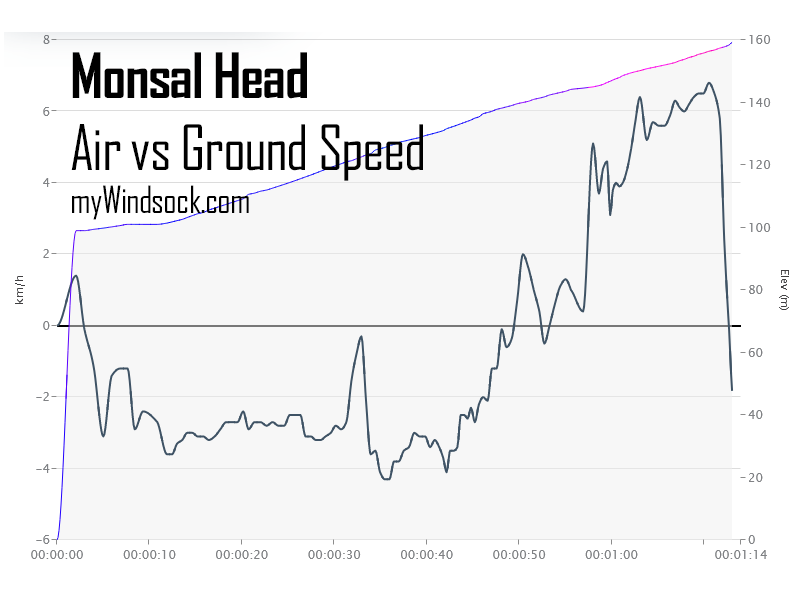
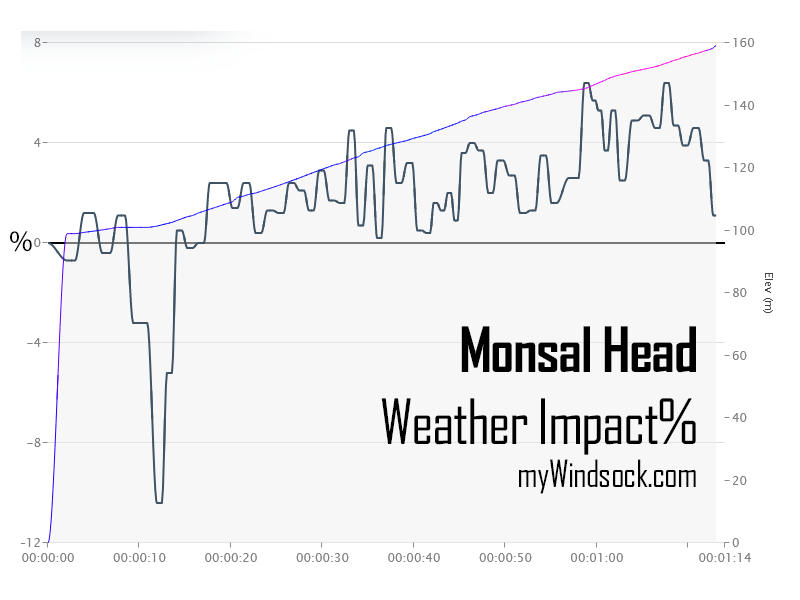
11Watts/kg is 11Watts/kg, right? Wrong.
On a climb like Monsal Head and the forecast weather conditions, a heavier rider with greater Watts, will better a ligheter rider who has the same 11Watts/kg required to hit the 1min 14.2Sec. The Delta Comparison Chart shows how the lighter rider loses time to the heavier rider.
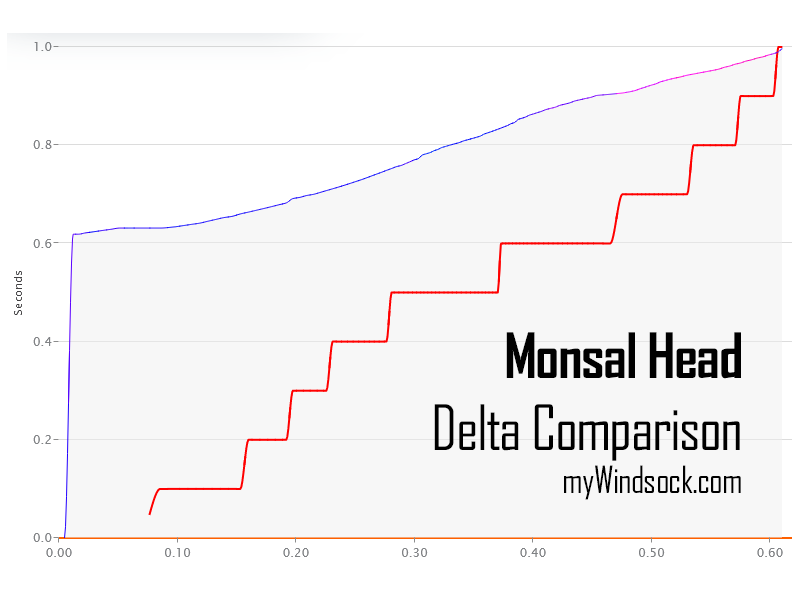
Why is the lighter rider slower? Let’s compare the resistances.
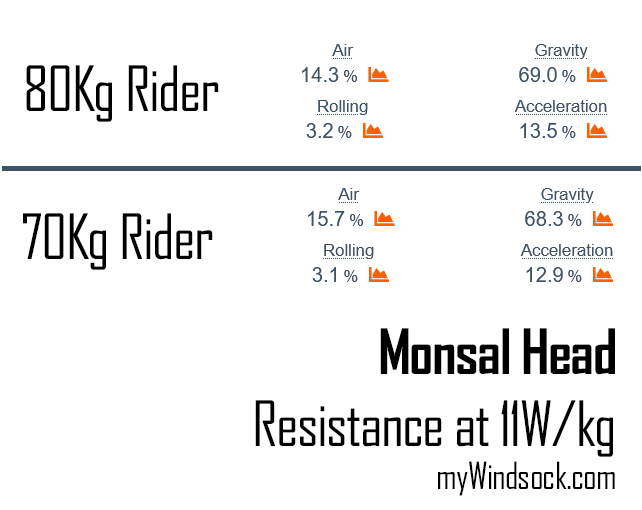
So, how many extra Watts would a 70kg rider require to match the 80kg rider’s time?
An extra 0.2Watts/kg (15Watts) would be required to match the time of the 80Kg Rider. Air resistance mostly consumes the additional Wattage.

How good did Malcolm Elliott have it?
Using myWindsock.com historic weather, we can look back to the recorded weather conditions for the 1981 Monsal Head Hill Climb.

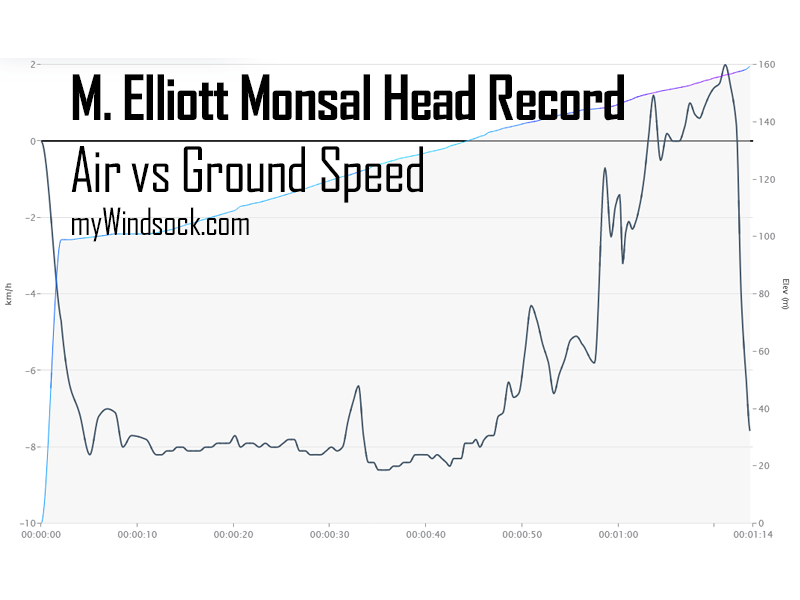
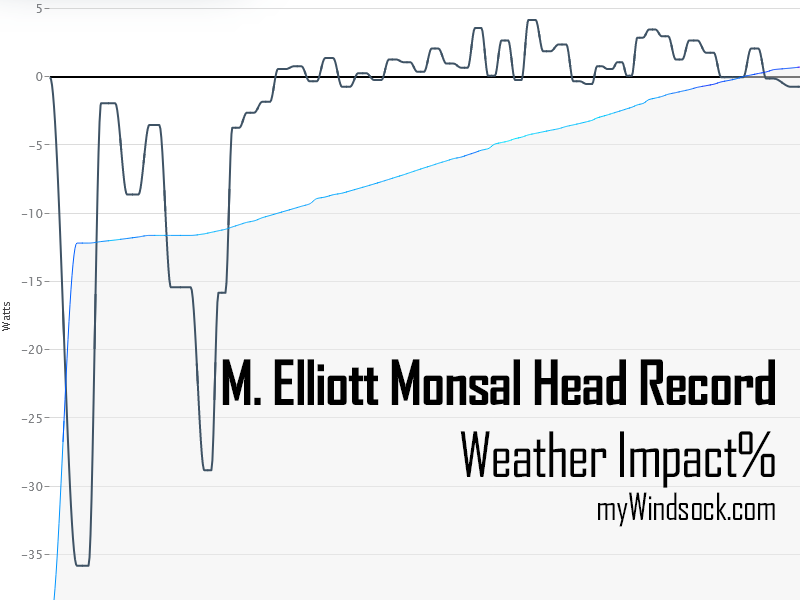
Big question, in 1981 what were the Watts/Kg required for an 80kg rider to record a 1min 14.2sec rider?
10.44Watts/kg. But, big caveat… This was 1981, clothing, tyres and the bike would have been less favourable than today’s equivalents.
Conclusion
The current forecast is significantly less favourable to that of 1981. This will make a record ride even more exceptional should the 40 year old record fall.
Check out the Monsal Head course yourself and make your own experiments.

 UK Time Trial Events
UK Time Trial Events




